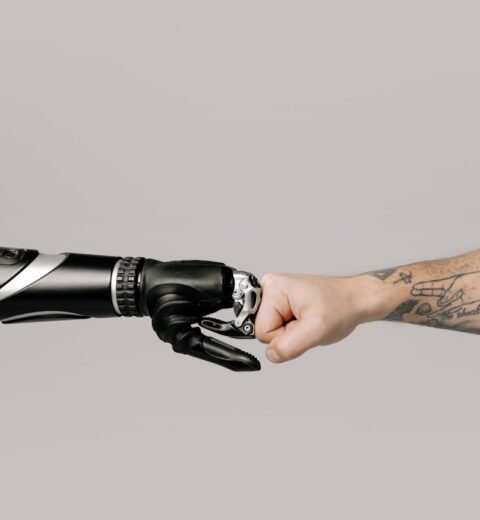Recruitment technology has moved beyond buzzwords. From AI-driven sourcing tools to automated interview scheduling, tech isn’t just changing how companies hire, it’s redefining the business case for talent acquisition.
But with so many tools on the market, leaders are asking: What’s the real ROI of AI in recruitment?
Here’s how to calculate the impact of recruitment tech on efficiency, cost, and quality—so you can prove its value to the business.
Key Takeaways
- Recruitment tech isn’t an expense—it’s an investment.
- ROI comes from saved time, reduced costs, and better hires.
- Measuring ROI requires both quantitative and qualitative data.
- AI helps recruiters shift from admin tasks to strategic value.
- The biggest gains come from blending AI with human judgment.
Where Recruitment Tech Delivers ROI
1. Time-to-Hire Reduction
AI can automate resume screening, candidate sourcing, and interview scheduling—cutting weeks off the hiring cycle. Faster hires mean less lost productivity and fewer delays in project delivery.
2. Cost-per-Hire Savings
By reducing reliance on agencies, minimizing manual work, and streamlining sourcing, companies see significant reductions in cost-per-hire. Tech also helps avoid expensive mis-hires through better candidate matching.
3. Improved Candidate Quality
AI sourcing tools expand reach beyond job boards and identify passive candidates who would otherwise be missed. Matching algorithms also help shortlist candidates who are more likely to succeed long-term.
4. Candidate Experience Enhancement
Chatbots, personalized outreach, and smooth scheduling create a faster, friendlier candidate journey. A better experience increases offer acceptance rates and boosts employer brand.
5. Recruiter Productivity
Recruiters spend less time on admin tasks and more time on strategic work—building relationships, advising hiring managers, and nurturing passive talent. This increases recruiter output without adding headcount.
How to Calculate ROI of AI in Recruitment
To measure ROI, compare the investment in technology with the value gained in efficiency, cost savings, and hiring outcomes.
ROI Formula: ROI=Net Benefits (Savings + Gains – Costs)Costs×100\text{ROI} = \frac{\text{Net Benefits (Savings + Gains – Costs)}}{\text{Costs}} \times 100ROI=CostsNet Benefits (Savings + Gains – Costs)×100
1: Identify Direct Savings
- Time saved per hire × Recruiter hourly cost
- Reduction in cost-per-hire (e.g., less agency spend)
- Lower turnover due to better hires
2: Measure Productivity Gains
- More hires per recruiter per month
- Higher candidate response rates with AI outreach
- Faster interview-to-offer cycles
3: Include Indirect Benefits
- Improved candidate experience → higher offer acceptance rates
- Stronger employer brand → reduced sourcing costs over time
- Diversity improvements → long-term innovation and performance benefits

Example ROI Calculation
Let’s say:
- Your company hires 100 roles per year
- Time-to-hire was 45 days; after AI, it’s 25 days
- Average recruiter cost = $50/hour
- Savings from reduced agency fees = $100,000/year
Time Savings:
20 days faster × 8 hours/day × 100 hires = 16,000 recruiter hours saved
16,000 hours × $50 = $800,000 saved
Total Benefits: $800,000 (time) + $100,000 (agency fees) = $900,000
Tech Investment: $200,000/year
ROI: 900,000−200,000200,000×100=350%\frac{900,000 – 200,000}{200,000} \times 100 = 350\%200,000900,000−200,000×100=350%
That’s a 350% ROI—clear proof that AI pays for itself many times over.
Table: Metrics to Track AI ROI in Recruitment
| Metric | Before Tech | After Tech | ROI Indicator |
|---|---|---|---|
| Time-to-Hire | 45 days | 25 days | Faster productivity |
| Cost-per-Hire | $8,000 | $5,000 | Direct cost savings |
| Recruiter Workload | 30 reqs/mo | 45 reqs/mo | Higher efficiency |
| Candidate Satisfaction | 70% | 90% | Improved employer brand |
| Offer Acceptance Rate | 65% | 82% | Higher conversion |
| Retention (12 months) | 70% | 85% | Better long-term fit |
The Hidden ROI: Strategic Value
Beyond dollars and days saved, AI elevates the recruiter’s role. Instead of spending hours sifting resumes, recruiters can focus on talent strategy, DEI initiatives, and building relationships with high-value candidates.
That shift creates long-term value that’s harder to quantify but critical to winning in today’s talent market.
Conclusion
The real ROI of AI in recruitment isn’t just about saving time or reducing costs it’s about transforming how companies compete for talent.
When recruiters spend less time on admin and more time on strategy, when candidates experience faster and more human hiring, and when businesses see better hires stay longer the impact goes far beyond efficiency.
AI in recruiting isn’t just an investment in tools, it’s an investment in growth.
FAQ
How much can AI reduce time-to-hire?
Companies often see reductions of 30–50% with AI-driven tools.
Is AI recruiting software expensive?
Costs vary, but the ROI usually outweighs the expense due to saved time, fewer mis-hires, and reduced agency reliance.
Does AI improve diversity in hiring?
Yes when designed properly, AI can help reduce unconscious bias by focusing on skills rather than background.
Can AI measure cultural fit?
Not reliably. Cultural and team fit assessments still require human judgment.
What’s the first step in calculating ROI?
Start by benchmarking your current metrics: time-to-hire, cost-per-hire, and candidate satisfaction.
Also read:
Source Links
- LinkedIn Future of Recruiting Report – https://business.linkedin.com/talent-solutions/blog/future-of-recruiting
- Deloitte Human Capital Trends – https://www2.deloitte.com/insights/humancapitaltrends
- SHRM Guide on AI ROI – https://www.shrm.org/resourcesandtools/hr-topics/technology/pages/measuring-roi-of-hr-tech.aspx
- McKinsey: The Economic Potential of Generative AI – https://www.mckinsey.com/featured-insights/mckinsey-explainers/economic-potential-of-generative-ai
- Gartner: ROI of AI in HR – https://www.gartner.com/en/human-resources/insights/ai




